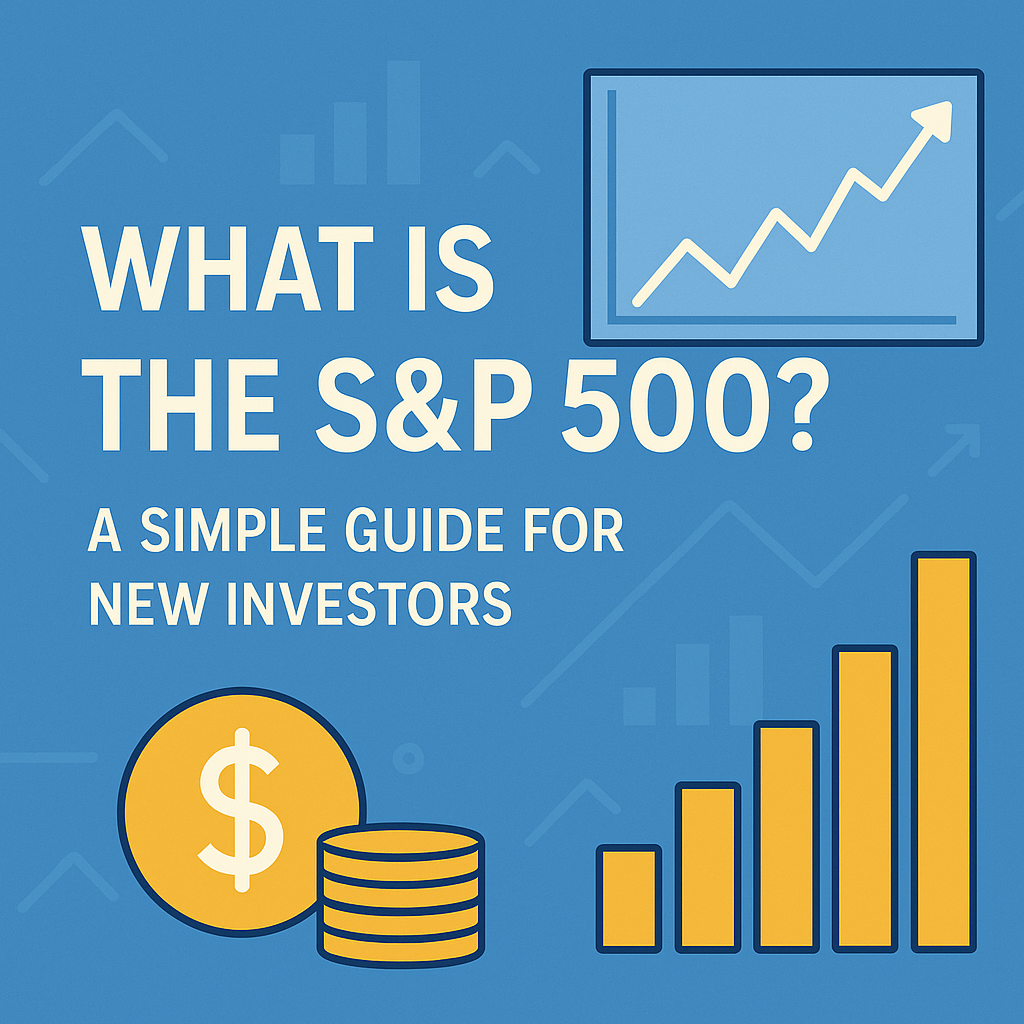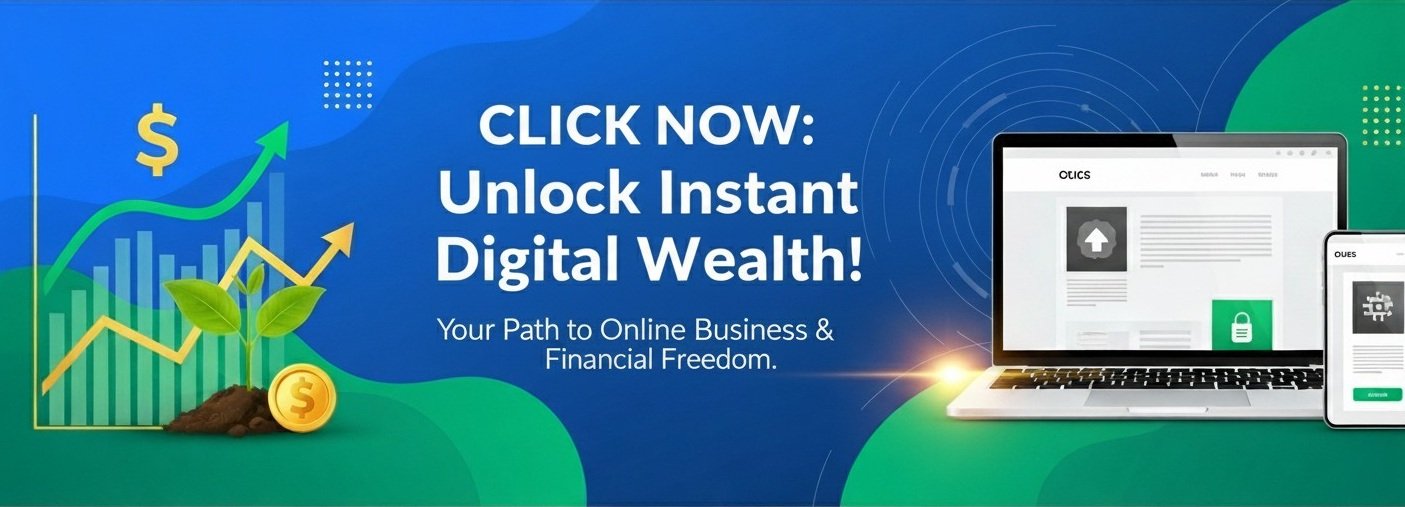✅Part 1:Introduction – What Is the S&P 500?
What Is the S&P 500? A Simple Guide for New Investors
For anyone stepping into the world of investing, understanding market indexes is crucial. Among these, the S&P 500 stands out as one of the most influential and widely tracked benchmarks in the world. But what exactly is the S&P 500, and why does it matter to new investors?
This guide provides a beginner-friendly yet thorough explanation of the S&P 500—what it represents, how it works, why it’s important, and how investors can use it as part of a long-term strategy.
What Is the S&P 500?
The S&P 500, or Standard & Poor’s 500 Index, is a stock market index that tracks the performance of 500 of the largest publicly traded companies in the United States. These companies are selected by a committee and represent various industries, including technology, healthcare, finance, energy, and consumer goods.
Created in 1957 by Standard & Poor’s, the index is designed to reflect the overall health and performance of the U.S. equity market.
“The S&P 500 is the single best gauge of large-cap U.S. equities,” says S&P Dow Jones Indices. “There is over $13.5 trillion indexed or benchmarked to the S&P 500, with indexed assets comprising approximately $5.4 trillion of this total.”
— S&P Global
How Are Companies Selected for the S&P 500?
Contrary to what some believe, inclusion in the S&P 500 isn’t automatic. Companies must meet specific criteria set by a selection committee. These include:
- Market capitalization of at least $18 billion (as of 2024)
- U.S. headquarters
- Publicly traded on a major U.S. stock exchange (NYSE or NASDAQ)
- Positive earnings in the most recent quarter and over the last 12 months
- Adequate liquidity (sufficient trading volume)
In other words, these are not just any 500 companies—they are some of the most stable and influential businesses in the country. The full eligibility criteria are published by S&P Dow Jones Indices.
✅ Part 2:Why the S&P 500 Matters + Sector Overview
Why Is the S&P 500 So Important?
The S&P 500 is not just a list of stocks; it serves several important purposes for investors, analysts, and economists.
📌 1. A Barometer of the U.S. Economy
Because it includes a diverse mix of industries, the S&P 500 offers a snapshot of the overall health of the American economy. When the index rises, it often signals confidence in business growth; when it falls, it may reflect economic uncertainty.
As legendary investor Warren Buffett once said:
“For most people, the best thing to do is owning the S&P 500 index fund.”
📌 2. A Benchmark for Performance
Many mutual funds, ETFs, and institutional investors use the S&P 500 as a performance benchmark. If a fund manager claims they’re beating the market, they’re usually referring to beating the S&P 500.
According to Morningstar, most actively managed funds underperform the S&P 500 over the long term.
📌 3. An Investment Vehicle
Retail investors can invest in the S&P 500 through index funds and exchange-traded funds (ETFs) like:
These ETFs aim to mirror the S&P 500’s performance with low expense ratios.
What Sectors Are Included in the S&P 500?
The S&P 500 spans 11 sectors, based on the Global Industry Classification Standard (GICS):
- Information Technology
- Health Care
- Financials
- Consumer Discretionary
- Communication Services
- Industrials
- Consumer Staples
- Energy
- Utilities
- Real Estate
- Materials
As of early 2025, technology companies such as Apple, Microsoft, and NVIDIA dominate the index, reflecting the growing impact of the tech sector on the U.S. economy.
Part 3:How the S&P 500 Is Calculated + Comparisons
How Is the S&P 500 Calculated?
The S&P 500 is a market-capitalization-weighted index, which means that companies with larger market caps have a greater influence on the index’s movement.
Formula in simple terms:
Index Value=∑(Market Cap of each company)Divisor\text{Index Value} = \frac{\sum (\text{Market Cap of each company})}{\text{Divisor}}Index Value=Divisor∑(Market Cap of each company)
This divisor is a proprietary figure maintained by S&P Dow Jones to account for stock splits, dividends, and other changes.
As a result:
- If Apple (AAPL) or Microsoft (MSFT) rises, it will affect the index more than smaller companies like Campbell Soup (CPB).
- The top 10 companies typically make up over 30% of the total weight of the index (source).
S&P 500 vs. Other Indexes
To understand how the S&P 500 compares, let’s look at two other commonly followed indexes: the Dow Jones Industrial Average (DJIA) and the NASDAQ Composite.
🟦 Key Differences:
| Index | # of Companies | Weighting Method | Key Features |
|---|---|---|---|
| S&P 500 | 500 | Market-cap weighted | Broad economic exposure |
| Dow Jones (DJIA) | 30 | Price-weighted | Focus on blue-chip companies |
| NASDAQ Composite | 3,000+ | Market-cap weighted | Tech-heavy and growth bias |
Reference sources:
✅ Part 3:How the S&P 500 Is Calculated + Comparisons
How Is the S&P 500 Calculated?
The S&P 500 is a market-capitalization-weighted index, which means that companies with larger market caps have a greater influence on the index’s movement.
Formula in simple terms:
Index Value=∑(Market Cap of each company)Divisor\text{Index Value} = \frac{\sum (\text{Market Cap of each company})}{\text{Divisor}}Index Value=Divisor∑(Market Cap of each company)
This divisor is a proprietary figure maintained by S&P Dow Jones to account for stock splits, dividends, and other changes.
As a result:
- If Apple (AAPL) or Microsoft (MSFT) rises, it will affect the index more than smaller companies like Campbell Soup (CPB).
- The top 10 companies typically make up over 30% of the total weight of the index (source).
S&P 500 vs. Other Indexes
To understand how the S&P 500 compares, let’s look at two other commonly followed indexes: the Dow Jones Industrial Average (DJIA) and the NASDAQ Composite.
🟦 Key Differences:
| Index | # of Companies | Weighting Method | Key Features |
|---|---|---|---|
| S&P 500 | 500 | Market-cap weighted | Broad economic exposure |
| Dow Jones (DJIA) | 30 | Price-weighted | Focus on blue-chip companies |
| NASDAQ Composite | 3,000+ | Market-cap weighted | Tech-heavy and growth bias |
Reference sources:
✅ Part 4:Historical Performance and Risks
Historical Performance of the S&P 500
The S&P 500 has delivered strong returns over time. According to OfficialData.org, the average annual return since inception (1928–2024) is around 10–11%, including dividends.
🔍 Example Periods of Notable Returns:
- 📈 1980s–1990s Bull Market: Strong economic growth and tech boom
- 📉 2000–2002: Dot-com crash
- 📉 2008–2009: Global Financial Crisis
- 📉 Q1 2020: COVID-19 pandemic market panic
- 📈 2020–2021: Stimulus-fueled recovery and tech surge
You can explore long-term charts and data here:
“Don’t look for the needle in the haystack. Just buy the haystack.”
— John C. Bogle, Founder of Vanguard
Risks of Investing in the S&P 500
Although widely seen as a stable, diversified investment, it is not without risks:
⚠️ 1. Market Risk
S&P 500 value can decline significantly during recessions, geopolitical events, or financial crises.
⚠️ 2. Concentration Risk
As of 2025, over 25% of the index is made up of just a few tech giants like Apple, Microsoft, and NVIDIA (source). A slump in tech can disproportionately impact the index.
⚠️ 3. No Downside Protection
Unlike bonds or dividend stocks, the S&P 500 does not offer fixed income. It is fully subject to market volatility.
“In investing, what is comfortable is rarely profitable.”
— Robert Arnott, Founder of Research Affiliates
Part 5:How to Invest in the S&P 500 + Global Role
How to Invest in the S&P 500
There are several ways for individuals to invest in the S&P 500, even with small amounts of capital.
✅ 1. Index Mutual Funds
Major providers like Vanguard, Fidelity, and Schwab offer mutual funds that track the S&P 500. These are common in retirement accounts (401(k), IRA).
Example:
✅ 2. ETFs (Exchange-Traded Funds)
ETFs trade like stocks and offer the same exposure with low fees. Three of the most popular are:
All offer exposure to the index with expense ratios below 0.10%.
✅ 3. Robo-Advisors
Automated investment platforms like Betterment or Wealthfront allocate a portion of your portfolio to S&P 500 ETFs based on your risk profile.
✅ 4. Fractional Shares
Platforms such as Fidelity, Charles Schwab, and Robinhood allow you to buy fractional shares, letting you invest in the S&P 500 starting with as little as $1.
S&P 500 as a Long-Term Investment Strategy
If you’re a beginner, using the S&P 500 as your core holding can be a smart way to build wealth over time.
🔑 Benefits:
- Diversification across 500 large-cap U.S. companies
- Low fees, especially with passive ETFs
- Historical growth over the long term
- No need for stock picking or market timing
“Time in the market beats timing the market.”
— Common investing wisdom, supported by Vanguard research.
Global Significance of the S&P 500
The S&P 500 is not just an American benchmark. It plays a massive role in global finance:
- International ETFs are benchmarked against the S&P 500
- Derivatives markets, such as S&P 500 Futures, are traded globally
- Central banks and sovereign wealth funds track it for U.S. market exposure
Many consider it a proxy for global investor sentiment due to the multinational nature of top constituents like Apple, Amazon, and Alphabet.
✅ Part 6:Common Misconceptions, Final Thoughts, and Disclaimer
Common Misconceptions About the S&P 500
Even though the S&P 500 is widely referenced, many new investors hold misunderstandings. Let’s clarify a few:
❌ “The S&P 500 is risk-free.”
No. While it’s less risky than buying individual stocks, it’s still subject to market volatility. The S&P 500 dropped over 30% during the 2008 crisis and ~20% during early 2020’s COVID crash (Macrotrends).
❌ “It includes all the best companies.”
Not true. Some companies are excluded because they’re not profitable, aren’t listed on U.S. exchanges, or are too small. For instance, global firms like Alibaba or private tech unicorns like Stripe aren’t included.
❌ “It’s only for wealthy investors.”
Also wrong. Thanks to fractional shares and low-cost ETFs, anyone with $1 or more can invest in the S&P 500 via Robinhood, Fidelity, or Charles Schwab.
Final Thoughts
The S&P 500 is more than just a market indicator—it’s one of the best tools for long-term wealth building, especially for beginners. With exposure to 500 of America’s biggest companies across sectors, it provides instant diversification, cost efficiency, and a track record of strong historical returns.
Whether you’re just getting started or looking to simplify your portfolio, investing in the S&P 500 through index funds or ETFs can be a smart move.
“If you can’t predict the future, diversify. And the S&P 500 is one of the easiest ways to do that.”
— Unofficial but widely accepted investment principle
⚠️ Disclaimer
This article is for informational purposes only and does not constitute financial advice. Please consult with a licensed financial advisor before making any investment decisions. Past performance is not indicative of future results. All investments carry risk, including the risk of loss.








